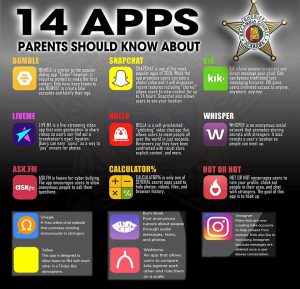
by Sarah Fowler | Mar 26, 2019 | Parental Rights
Join State Board of Education Member Sarah Fowler for an Informational Meeting on Comprehensive Sexual Education in Ohio’s Classrooms.
Thursday, March 28, 2019 – 6pm doors open, program 6:30-8:30pm
Austinburg Townhall, 2794 OH-307, Austinburg, OH 44010
Topics Include:
– The 15 Harmful Elements of Comprehensive Sexual Education
– Evidences of obscenity in Ohio’s classrooms
– Are your children being exposed to more than “the birds and the bees” in elementary school?
– Psychological and Social Impacts of Comprehensive Sexual Education
– How can parents, teachers, and local school boards ensure protection for their students?
Program presented by: Ohio Values Voters & Protect Ohio Children
RSVP to receive updates through Facebook: https://www.facebook.com/events/289581275036025/
This morning my news feed was full of heartbreaking stories about sex trafficking. Did you know the average age for a young girl to become a trafficking victim is 13? Children are being inoculated to ignore the warning signs of dangerous relationships and activities through Comprehensive Sexual Education.
Parents, please mark your calendars for this important informational meeting that will help you protect your kids!
Thursday, March 28, 2019 – 6pm doors open, program 6:30-8:30pm
Austinburg Townhall, 2794 OH-307, Austinburg, OH 44010
In February, Ohio Going Blue shared a graphic of key apps for parents to be aware of and monitor for sexual content or exploitation:

Take a few moments to read and comment on the proposed Social Emotional Learning Standards…
It remains my position that the family is primarily responsible for cultivating the character, attitudes and beliefs of their own children, however, since the state is moving forward with this project I want to be sure my constituents had an opportunity to comment. (Note: Comment period ended March 11, 2019, further comments may be e-mailed: sarah.fowler@education.ohio.gov)
by Sarah Fowler | Jun 3, 2018 | Local Control, Parental Rights, Social-Emotional, Testing
Despite repeated assurances that the State does not intend to test children’s attitudes, behaviors, and beliefs, language in the final draft document of the State Strategic Plan (May 9, 2018) emphasized measuring beyond the traditional scope of academics. The plan explains, “the state can rely on traditional measures of proficiency in certain content areas, but such measures are not always complete in terms of what this plan is promoting. At the same time, leaders recognize that it will take time to fully develop meaningful and appropriate metrics that speak to all plan dimensions, especially the four domains.¹”
What are the four domains? Two of them are academic in nature: Foundational Skills and Knowledge (literacy, numeracy and technology) and Well-Rounded Content (social studies, sciences, languages, arts, physical education, etc). The remaining two are affective (behavioral,emotional, belief oriented). Social-Emotional focuses on self-awareness, self-management, social awareness, relationship skills, and responsible decision making, while the Leadership and Reasoning domain emphasizes problem solving, design thinking, creativity, and information analytics. In other words, how and why a child thinks and acts a certain way. These areas of a child’s development determine who they are as an individual and have been traditionally cultivated in the context of their own family.
This is not the first time that the State has pushed for greater data collection and analysis of student’s personal characteristics and beliefs. In the 1990’s the legislature attempted to halt the Ohio Department of Education’s plans to assess children’s attitudes but the work continued on behind the scenes, expanding and developing social-emotional goals and measurements. Today, the Ohio Department of Education (ODE) seeks to link a student’s social-emotional data with their past and future¹. Inter-agency data access and sharing agreements are to be leveraged to establish progress indicators and determine how well students and schools are meeting the new state goals. To accomplish this goal data may be linked with family socio-economic status, childcare or disciplinary records. From this data, projections may be made about a child’s future and as one ODE employee commented during discussions, “course corrections can be made much sooner with that information.”
Don’t let the vague terminology used throughout Ohio’s Strategic Plan draft fool you when it says the affective domains will not be tested! There are references to collecting, measuring, comparing, linking, sharing and using social-emotional data to determine student and school performance throughout the entire document. The plan explains that standard development is the gateway to creating definitions of “proficiency” and that each domain should be “equally valued.” The plan states under Standards, Assessments and Accountability, “Ohio must be more deliberate in defining expectations for social-emotional and leadership/reasoning knowledge and skills and challenge students to master those as well.²” “The four learning domains require the state to explore innovative approaches to assessments that go beyond academic content…³” As we have seen repeatedly in Ohio’s short State Report Card history, it is only a short step from mandatory testing of students to determining teacher and school “quality” based upon the state’s determination of “proficiency” and “progress.” We need to decide if teachers and schools should be held accountable for the development of social-emotional beliefs and behaviors in Ohio’s children or if these critical areas of development should remain in the domain of the family.
¹ – “Each Child, Our Future” Ohio’s Strategic Plan for Education: 2019-2024, draft May 9, 2018, pg 19
² – pg 8
³ – pg 9
Link to Ohio’s Strategic Plan, May 9, 2018 draft: SP-Full merged document-5-9-18-11PM (002)
![Chronic Absenteeism Indicator]()
by Sarah Fowler | May 12, 2018 | Local Control, Parental Rights, Report Card
Item #17 of next week’s agenda is to add “Chronic Absenteeism” to the State Report Card calculations (A-F letter grade/”accountability” system).
There are three things that bear some additional consideration in my opinion:
– The resolution counts BOTH EXCUSED and unexcused absences against the school. Doesn’t this remove all local control and parental discretion over when a child may be excused?
– The resolution goes beyond the scope of truancy laws and holds districts (rather than parents) accountable for student attendance – how exactly is the district ultimately the responsible party for the child attending school?
– The rule would be retroactively applied to the 2017-18 school year. This follows closely on the heels of a resolution last month that was also applied retroactively. Exactly how is a district expected to prepare for something that they were not aware of in advance?
by Sarah Fowler | Mar 17, 2018 | Uncategorized
HB512 is scheduled for a hearing and possible substitute bill vote on Wednesday, March 21.
At this time we have no information about what may be included in the substitute bill. Precedent would suggest that amendments meant to appease the most vocal groups without changing the substance of the bill are likely. Be careful about getting too excited about skunkweed disguised as roses!
Please check the committee notice Monday and contact the Chairman’s office if you’re interested in testifying on HB512. At the present time testimony is not listed on the hearing notice.

by Sarah Fowler | Mar 14, 2018 | Uncategorized
On Tuesday, March 13, the Ohio State Board of Education passed a resolution OPPOSING HB512 and it’s massive shift of education authority from a board with elected representation to a mega-agency under the direction of ONE person appointed by the Governor.
Read the SBE’s resolution OPPOSING HB512 here!
The following morning, SBE members Meryl Johnson (district 11) and Lisa Woods (district 5) offered individual opponent testimony. You can read the opponent testimonies on the Committee website under testimony opposing HB512 on March 14. (My opponent testimony is also available under the same link, March 7th.) I also attended the hearing and noted about 75-100 people who appeared to be opposing HB512 in attendance and about three hours of opposition testimony.






